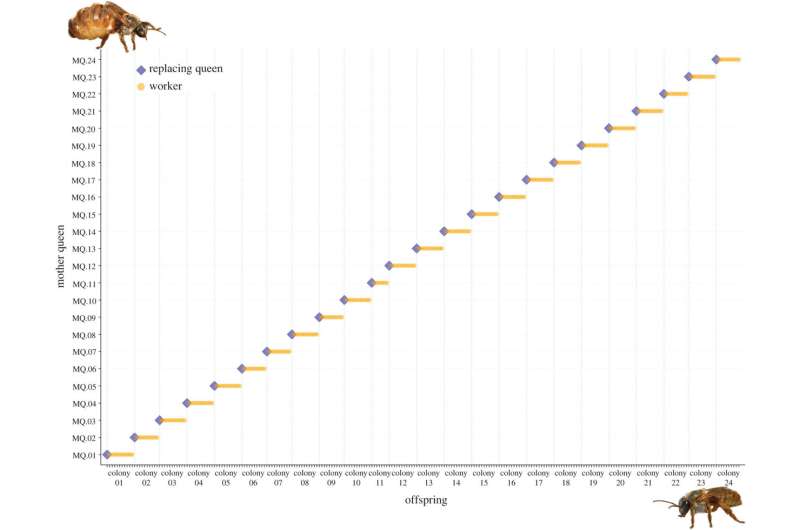Figure 1. Egg-laying queens are always replaced by own offspring in M. beecheii. The full likelihood maternal parentage analysis using five microsatellite markers shows that all replacing queens (blue diamonds) were assigned as daughters of the previous egg-laying queen with a probability of 1. Credit: Photos by Jorge Ramirez Pech/DOI: 10.1098/rsbl.2021.0498
A team of researchers from the Katholieke Universiteit Leuven and CCBA Universidad Autónoma de Yucatán, reports that guard Melipona beecheii stingless bees do not confer chemicals to larvae that allow them to develop into queens. In their paper published in the journal Biology Letters, the group describes giving bee larvae a special floral oil to determine if guard bees were giving larvae chemicals to incite them into growing into queen bees.
Prior research has shown that a fifth of Melipona beecheii stingless bee larvae develop into queen bees. But each hive will only allow one to develop into a queen—the rest are killed as they emerge from their cells. This intriguing finding has led biologists to wonder why so many of the larvae develop into queens and what underlying factors cause it. In many bee species, some larvae are fed special trigger factors that induce growth into queens. In such instances, the larvae are generally given bigger cells to support the larger body size of the queen, and there are usually just a few of them. With Melipona beecheii stingless bees, the cells are all the same size, which suggests that guard bees play no role in inducing larvae to develop into queens. Still, some have suggested an unknown factor given to the larvae to lead them to develop into queens.
In this new effort, the researchers sought to solve the mystery by adding geraniol, a chemical other bees use to prompt transformation to a queen bee, to the diet of all of the larvae developing in several hives. They then checked to see if all of them grew to become queens. They did not, and in fact, the researchers found no difference in their numbers, quashing the idea that the guards are behind the large numbers of larvae growing into queens. The researchers next did genetic sequencing on multiple bees from several hives to find out if the large number of queens was a possible attempt to spread the colony's DNA, and found they were all 100% consistent, which meant that there was no evidence of parasitism.
The work has left them where they started—with no explanation as to how the larvae "choose" to grow into queens, or why. But at least now they know that it is something specific to this species.
More information: Ricardo Caliari Oliveira et al, Tragedy of the commons in Melipona bees revisited, Biology Letters (2022). DOI: 10.1098/rsbl.2021.0498
Journal information: Biology Letters
© 2022 Science X Network






















